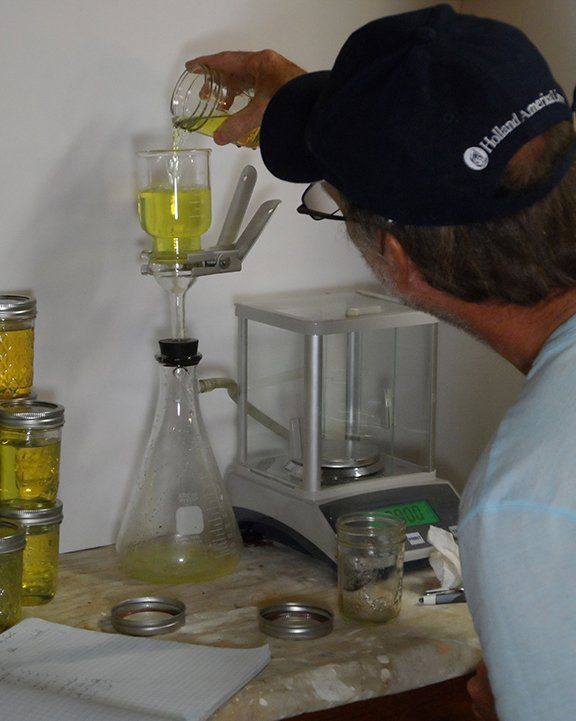Practical Sailor contributor, Chesapeake Bay sailing blogger, and chemistry guru Drew Frye is back in the lab with his beakers, test tubes, and mason jars investigating fuel additives, this time fuel storage additives. Frye has covered a range of fuel additives before, beginning back in 2008 with an article focusing on the effects of ethanol in gasoline. Our current test involves both gasoline and ultra-low sulphur diesel.
The fuel storage additive study is proving to be a tricky one, partly because treated gas is capable of being stored for very long time in the right conditions. Samples in our accelerated lab testing were still within the recommended octane specifications after the equivalent of two years of storage. Diesel, in the right conditions, can be stored even longer and still stay within specification.
Sometimes it is not what has been added to your fuel that matters, but what is missing. The most obvious difference between gasoline and diesel during our vented aging tests is that gasoline samples evaporated and required replenishment at the mid-way point. Studies by BoatUS and the EPA have shown that anywhere between 5 to 20 percent of the contents of a portable or installed polyethylene tank can vanish during the course of a year, the result of breathing losses and permeation. The remaining fuel is lower in octane, contains fewer of the volatiles that are so essential for easy starting, and has reduced solvency for gum and varnish. It often looks perfectly good-most of our samples did-but is perfectly rotten and potentially harmful as fuel.
There are several things you can do to ensure that fuel doesn’t go bad over the off-season, or during periods of long-term storage.
- Reduce permeation. New EPA requirements for low permeation jerry cans, plastic tanks, and hoses are a blessing. The loss of vital volatile material is reduced and odors are reduced. However, our experience with the new jerry cans and portable tanks has been disappointing. Most of the designs we’ve tried have serious flaws; we can only hope the market place will sort that out. Metal tanks have zero permeation.
- Store in a cool place. Keep jerry cans out of the sun whenever possible.
- Vent filters. The EPA mandated carbon filters on new boats and aftermarket silica gel filters reduce water absorption and reduce breathing losses. Over a typical 10-years life, these filters can pay for themselves in saved fuel alone (we checked the calculations-depending on the boat you can expect to save 1-3 gallons per year), before factoring in reduced engine problems caused by corrosion and varnish. (See Practical Sailor January 2013 and, for diesel fuel, January 2014.)
- Keep the tank full. A full tank does not breath, and fresh fuel renews the volatile content.
- Keep the vent closed when not in use (dinghy engines only). Water absorption and evaporation affect small tanks more quickly.
- Run the engine often. The silence of wind power is nice, but gas does not keep.
For more on fuel additives, check out my post two weeks ago, Fuel Additives: Snake Oil or Good Science. which has some additional links. Diesel engine owners will want to read the article in our January 2014 issue Diesel Fuel System Maintenance Best Practices.







































